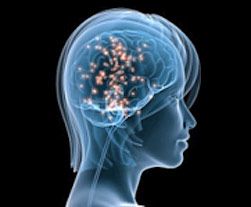Article
Poor Acute Treatment May Lead to Chronic Migraine
Author(s):
Efficacy of acute medication matters beyond just treating a single migraine. It may increase the risk of worsened disease.
Poor acute treatment of episodic migraine may lead to chronic migraine.

Chronic migraine (CM), a severe and disabling neurologic disease, occurs with a worldwide prevalence of about 2%.1 The International Classification of Headache Disorders (ICHD)-3 beta defines CM as 15 or more headache days per month over at least 3 months’ time, with at least 8 days per month on which headaches and associated symptoms meet diagnostic criteria for migraine.2 CM has a significant negative impact on individuals and society; 90% of persons with CM have moderate or greater levels of migraine-related disability.3 The total average cost of CM is estimated at $7750 per person annually-4.4 times greater than the cost of episodic migraine (EM)-with the majority of the cost due to loss of productive time.4
Why EM transforms to CM is not fully understood, but many risk factors have been identified.5 Among the proposed mechanisms is that a higher frequency of migraine attacks produces sensitization of the trigeminal system and affected neuronal networks, reducing the overall threshold for activation. To further investigate this proposed mechanism, a recent large longitudinal observational study examined the effect acute treatment response has on transformation to CM.6
The study followed selected participants from the American Migraine Prevalence and Prevention Study. From that study, 5681 individuals meeting ICHD 2 criteria for EM, determined by standardized survey, were identified and followed for 1 year. Variables collected included sociodemographic data, headache frequency, disability due to migraine, depression, and acute treatment type and efficacy.
Treatment efficacy was assessed using a validated self-administered survey (the Migraine-Treatment Optimization Questionnaire) that grades the acute treatment into 1 of 4 response categories: very poor, poor, moderate, or maximum treatment efficacy. At 1 year, participants who had transformed to CM were identified. Multivariate modeling was used to calculate the overall risk of self-reported efficacy of acute treatments on conversion to CM.
The results showed that 3.1% of participants transformed from EM to CM. Participants who were graded as having very poor response to acute treatment were at significantly higher risk for developing CM compared with those who had maximum acute treatment response. Across all 3 models used, adjusting for sociodemographic, headache frequency/disability, and acute medication class, very poor response to treatment remained a consistent marker for progression to CM (OR=3.39, 95% CI, 1.98-5.8; OR=2.39, 95% CI, 1.33-4.28; OR=2.55, 95% CI, 1.42-4.61, respectively).
Overall, this suggests that individuals with very poor acute treatment response had roughly 2.5- to 3.5-fold greater odds of developing CM. Those with moderate or better acute treatment efficacy did not have a significant increased risk.
A weakness of this study’s observational design is that it cannot demonstrate a direct casual effect. It’s possible that very poor acute treatment response may be a marker for more severe/resistant disease and may not be a cause for the transformation to CM. Although this possibility cannot be excluded, the authors did adjust for headache days/month and headache-related disability and very poor treatment response remained a significant risk for transformation (OR=2.39, 95% CI, 1.33-4.28).
Among the types of acute treatments, no single medication class was associated with a higher risk of transformation to CM. Although the study was not designed for head-to-head treatment comparisons, individuals who used triptans were more likely to have a moderate or maximum acute treatment response and patients who used NSAIDs or simple analgesics were less likely to be in the high efficacy categories.
Overall, the study provides supporting evidence that efficacy of acute medication matters beyond just treating a single migraine and may have an impact on the risk of developing worsened disease. Although the individual effectiveness of acute medications was not addressed in this study, that has been addressed in a recent systematic review.7
Bottom line: Ineffective acute migraine treatment is associated with a 2.5- to 3.5-fold increased risk of transformation to chronic migraine.
References:
1. Natoli JL, Manack A, Dean B, et al. Global prevalence of chronic migraine: a systematic review. Cephalalgia. 2010;30:599-609.
2. Headache Classification Committee of the International Headache Society (IHS). The International Classification of Headache Disorders, 3rd edition (beta version). Cephalagia. 2013;33:629-808.
3. Buse D, Manack A, Serrano D, et al. Headache impact of chronic and episodic migraine: results from the American Migraine Prevalence and Prevention study. Headache. 2012;52:3-17.
4. Munakata J, Hazard E, Serrano D, et al. Economic burden of transformed migraine: results from the American Migraine Prevalence and Prevention (AMPP) study. Headache. 2009;49:498-508.
5. Schwedt TJ. Chronic migraine. BMJ. 2014;348:g1416.
6. Lipton RB, Fanning KM, Serrano D, et al. Ineffective acute treatment of episodic migraine is associated with new-onset chronic migraine. Neurology.2015;84:688-695.
7. Marmura MJ, Silberstein SD, Schwedt TJ. The acute treatment of migraine in adults: the american headache society evidence assessment of migraine pharmacotherapies. Headache. 2015;55:3-20.




